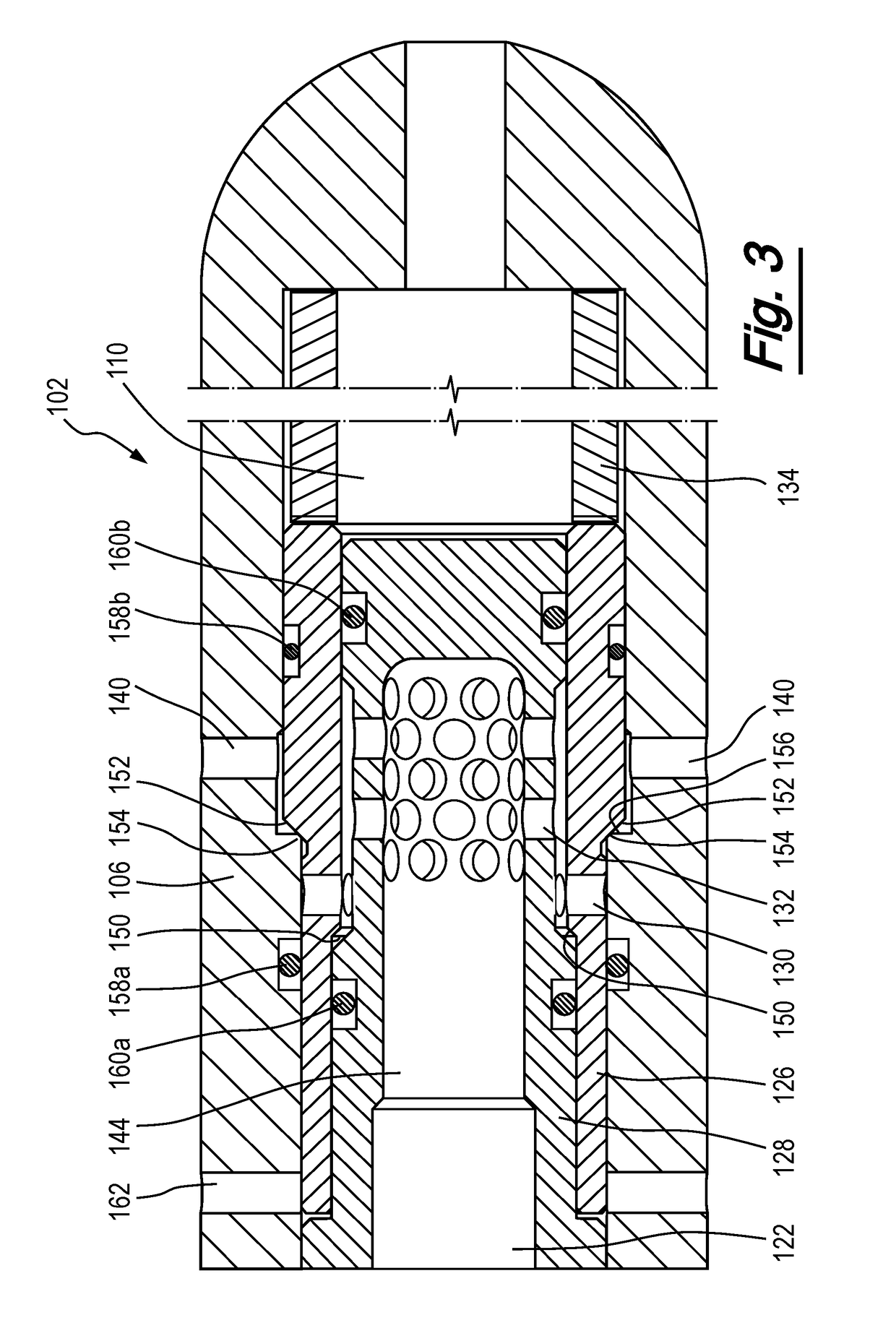Fluid Discharge Apparatus and Method of Use
a technology of fluid discharge apparatus and discharge valve, which is applied in the direction of valve operating means/release devices, wellbores, pipelines, etc., can solve the problems of reducing the effective inner diameter of the conduit, and affecting the flow ra
- Summary
- Abstract
- Description
- Claims
- Application Information
AI Technical Summary
Benefits of technology
Problems solved by technology
Method used
Image
Examples
Embodiment Construction
[0044]The invention has application to cleaning operations for subsea pipelines, including blockage and / or debris removal, and is particularly advantageous in cleaning operations in which the pipeline is accessed from surface via a marine, catenary and / or flexible riser. Accordingly, the invention will be described in the context of such an operation by way of example only.
[0045]Referring firstly to FIG. 1, there is shown a system according to an embodiment of the invention, generally depicted at 100. System 100 is formed from a fluid discharge apparatus 102 and a flowline 104, which in this case is a flexible hose. The apparatus 102 and flexible hose are shown here in situ in a fluid conduit 112, which in this case is a subsea pipeline accessed by a production riser. The apparatus 102 and the flexible hose 104 are deployed from a storage reel 114 via an injector unit 116 and a pressure control device 118, comprising a stripper and blowout preventer (BOP) unit.
[0046]The injector uni...
PUM
 Login to View More
Login to View More Abstract
Description
Claims
Application Information
 Login to View More
Login to View More - R&D
- Intellectual Property
- Life Sciences
- Materials
- Tech Scout
- Unparalleled Data Quality
- Higher Quality Content
- 60% Fewer Hallucinations
Browse by: Latest US Patents, China's latest patents, Technical Efficacy Thesaurus, Application Domain, Technology Topic, Popular Technical Reports.
© 2025 PatSnap. All rights reserved.Legal|Privacy policy|Modern Slavery Act Transparency Statement|Sitemap|About US| Contact US: help@patsnap.com



